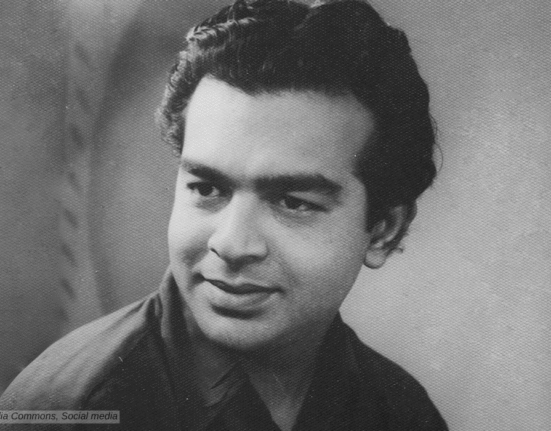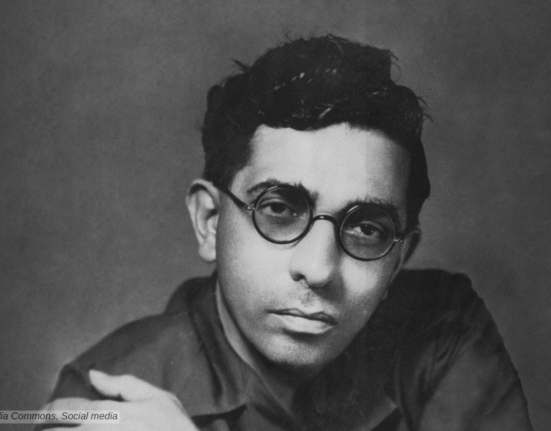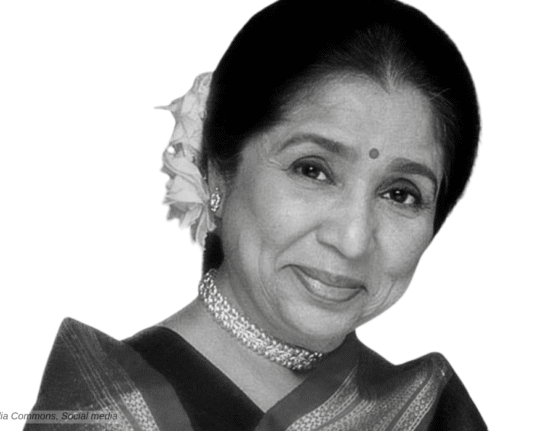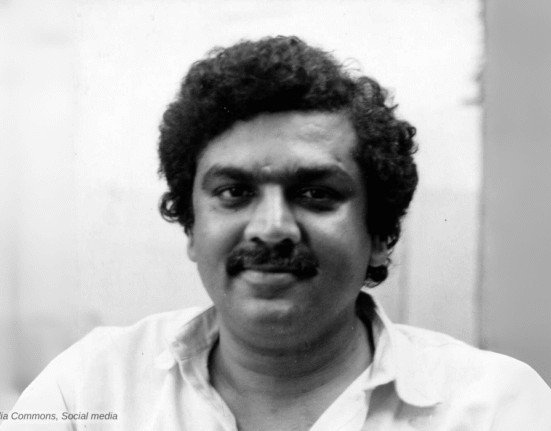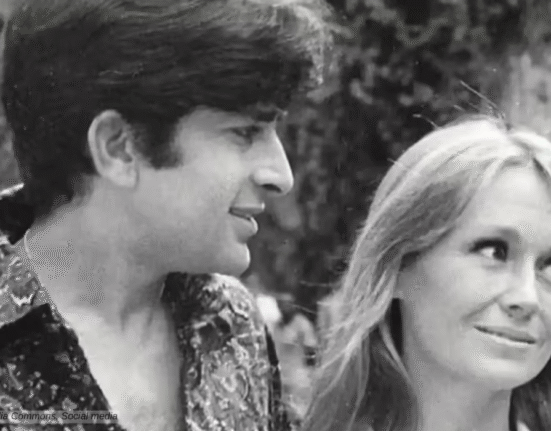Although she started her career as a leading lady and starred in many mythological films in her early career, her real stardom came when she played the suffering mother’s roles to perfection. Nirupa Roy was the Quintessential Mother of Indian cinema, remembered for her films like Do Bigha Zamin, Munimji, Ram Aur Shyam, Deewaar, Amar Akbar Anthony, Betaab, and Mard.
Early Life
Nirupa Roy was born Kokila Kishorechandra Bulsara on January 4, 1931, in Valsad, Gujarat. She married Kamal Roy at a very young age and moved to Mumbai. Kamal Roy, a huge movie buff, was always interested in working in films. He tried his luck in the films, but failed. But his young, beautiful wife caught the attention of the makers of the Gujarati film Ranakdevi (1946), and they cast her as a lead.
Breakthrough of Nirupa Roy

Her Hindi film debut came with, “Amar Raj (1946),” opposite Trilok Kapoor. Trilok Kapoor and Nirupa Roy went on to appear in eighteen movies, often portraying divine characters in mythological films. Their on-screen chemistry was particularly notable in “Har Har Mahadev,” where Roy played Parvati opposite Kapoor’s Shiva.
Some of their other films include Veer Bhimsen (1950), Alakh Niranjan (1950), Shri Ganesh Janma (1951), Shri Vishnu Bhagwan (1951), Ram Janma (1951), Maya Machhindra (1951), Rajrani Damayanti (1952), Chakradhari (1954), Waman Avtar (1955), Naag Mani (1957), Shesh Naag (1957), and many more.
Nirupa Roy acted in a number of films as a lead like “Bhanwar (1947),” “Lakhon Mein Ek (1947),” “Gunsundari (1948),” “Nanand Bhojai (1948),” “Mitti Ke Khiloune (1948),” “Uddhar (1949),” with Bharat Bhushan and Dev Anand, “Nai Zindagi (1951),” “Izzat (1952),” “Dharma Pathni (1953),” “Watan (1954),” “Tonga-wali (1955),” “Naukari (1955),” with Balraj Sahni, and “Bhai Bhai (1955)” with Ashok Kumar, among others.
Critical Acclaim
Her breakthrough came with the 1953 Bimal Roy classic “Do Bigha Zamin,” where her performance garnered critical acclaim. Roy’s ability to evoke deep emotions made her the go-to actress for roles that required a portrayal of profound grief and resilience. One of her other significant films was Amar Kumar’s “Garam Coat (1955),” with Balraj Sahni. The film was written by noted writer Rajinder Singh Bedi.
In 1959, Nirupa Roy starred in musical hit Rani Rupmati (1959) opposite Bharat Bhushan. The film had one of the most beautiful Lata numbe r”Aa Laut Ke Aaja Mere Meet.” Roy worked alongside Bharat Bhushan, Balraj Sahni, and Ashok Kumar, who were among the leading actors of their time.



Transition to Character Roles
In 1955, she acted as Dev Anand’s mother in “MunimJi,” even though she is about 8 years younger than him. For her roles in “Munimji (1955),” “Chhaya (1961), and Shehnai (1964), she went on to win the Filmfare Best Supporting Actress Awards.
Apart from acting in mythological and fantasy films, Nirupa continues to do character roles in many mainstream films like Musafir (1957), Chaalbaaz (1958), Dulhan (1958), Aanchal (1960), Bezubaan (1962), Kaun Apna Kaun Paraya (1958), Mujhe Jeene Do (1963), Grahasti (1963), Benazir (1964), Shaheed (1965), Ram Aur Shyam (1967), Jaal (1967), Aabroo (1968), Raja Aur Runk (1968), Purab Aur Paschim (1970), Aan Milo Sajna (1970), and Ghar Ghar Ki Kahani (1970).
The Long Suffering Mother
In the 1970s, Roy’s portrayal of the mother figure reached new heights with her roles in “Deewaar (1975)” and “Amar Akbar Anthony (1977).” In ‘Deewaar’, she played the mother torn between her two sons, one a law-abiding police officer and the other a path-straying smuggler. Her dialogue delivery and emotional depth in this film became a benchmark for mother roles in Indian cinema.
Roy’s performances in these films are often cited as defining moments in Hindi film history. Showcasing the immense emotional depth and emotional availability, Roy easily portray the hardest of part with great conviction..
Her collaborations extended to working with other legends such as Dilip Kumar, Dev Anand, Dharmendra, and Sunny Deol. Each actor brought out a different aspect of Roy’s acting prowess, whether it was the stoic suffering she portrayed alongside Dilip Kumar or the resilient mother figure she embodied with Dharmendra.
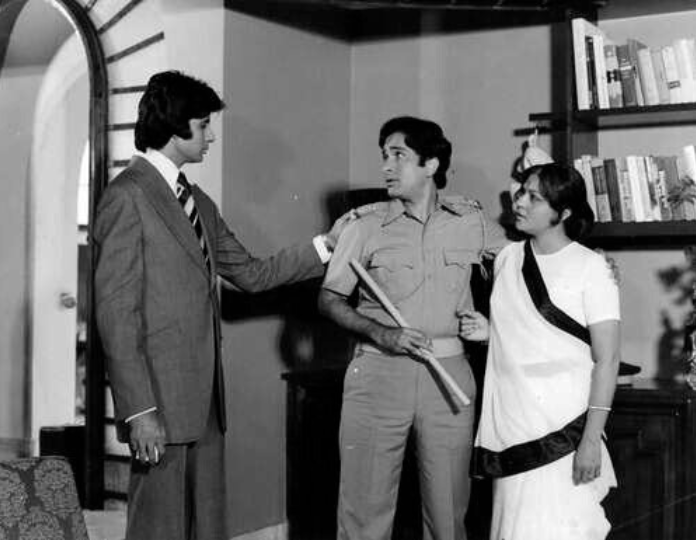
Famous Films of Nirupa Roy
Some of Roy’s remarkable performances in the movies like Chhoti Bahu (1971), 1971 Ganga Tera Pani Amrit (1971), Jawani Diwani (1972), Kuchhe Dhaage (1973), Roti (1974),””Maa (1976), “KKhoon Pasina (1977),” “Muqaddar Ka Sikandar (1978),” “Suhaag (1979),” “Katilon Ke Kaatil (1981),” “Kranti (1981),” “Betaab (1983),” “Inquilaab (1984), “Geraftaar (1985),” “Mard (1985)” and Gangaa Jamunaa Saraswati (1988) Inteqam (1988) Aasoo Bane Angaarey (1993) etched her in the hearts of audiences.
Nirupa Roy was perhaps the only actress to have played the role of mother to a father and son both. She was the mother of Dharmendra in “Maa” (1976 film) and his son, Sunny Deol “Betaab (1983).
Her final appearance in “Laal Badshah (1999)” saw her in a powerful matriarchal role. She time and again proved that her charisma and talent remained undiminished even in the latter part of her career. Although she gets typecast in sorrowful roles, Roy’s talent was undeniable.
She won three Filmfare Awards for Best Supporting Actress. She was posthumously honoured with the Filmfare Lifetime Achievement Award in 2004.
On 13 October 2004, Nirupa Roy suffered a cardiac arrest in Mumbai and died at the age of 73. She has two children, sons Yogesh and Kiran Roy. Both of them were in the news for wrong reasons. They had dispute over her property. Yogesh even accused Kiran and his wife of torturing her. Kiran also accused Yogesh of beating her over the transfer of her property.
We don’t know the details of her ordeal but it is clear that her own children betray her in her last days. Nirupa Roy died not because of heart attack only, she died of heart break too.
Nirupa Roy on IMDB




